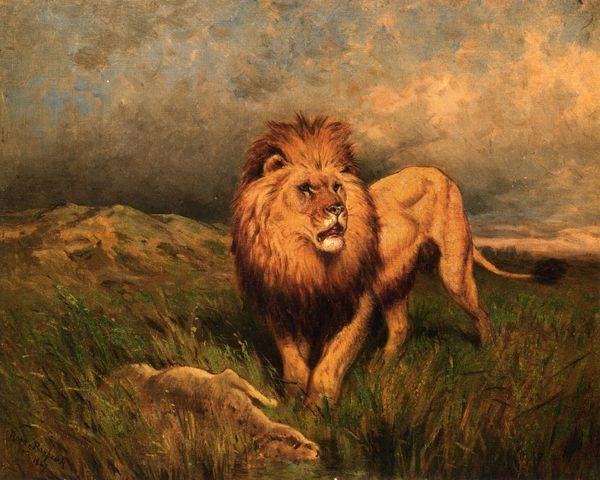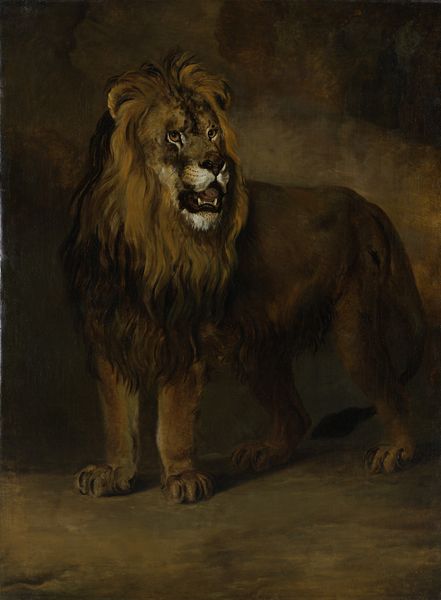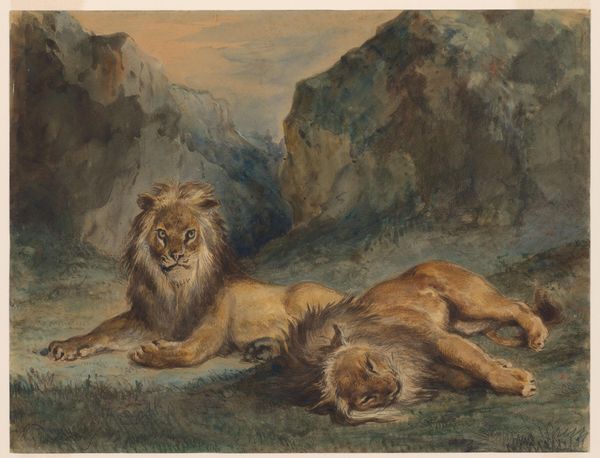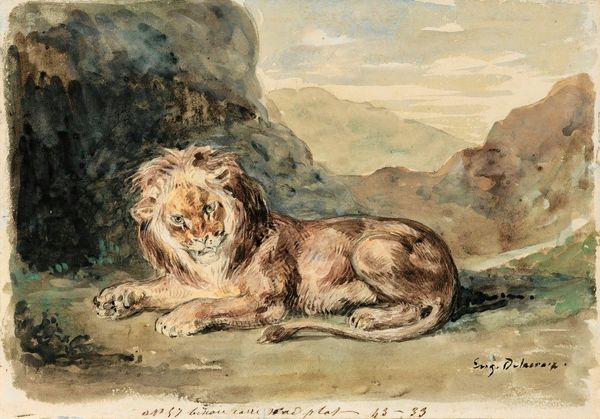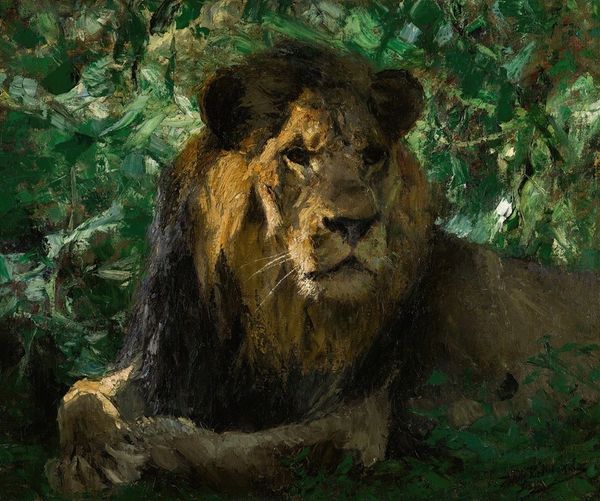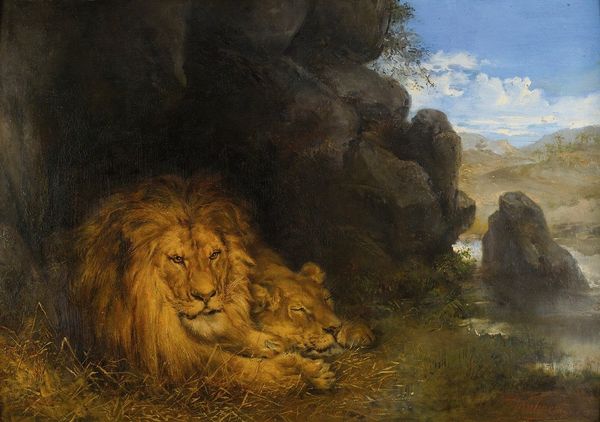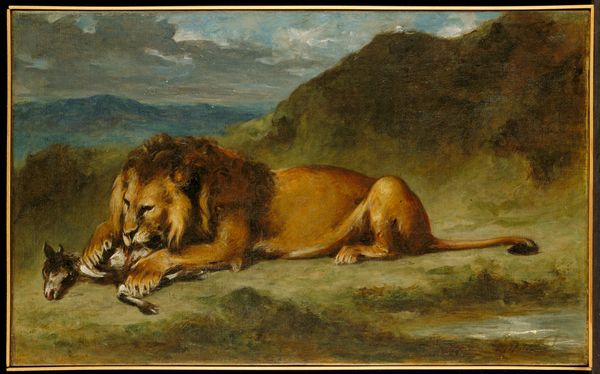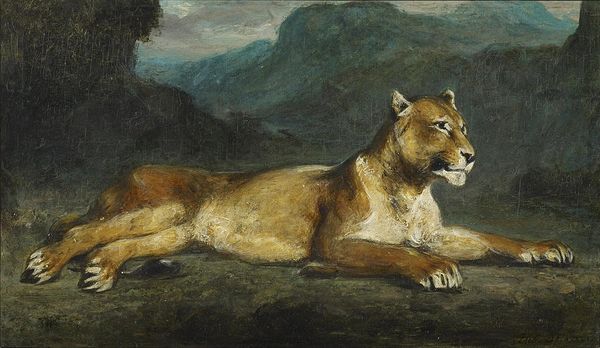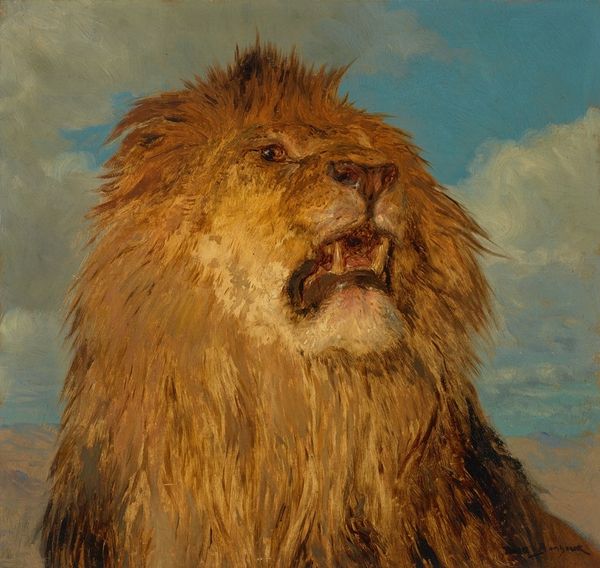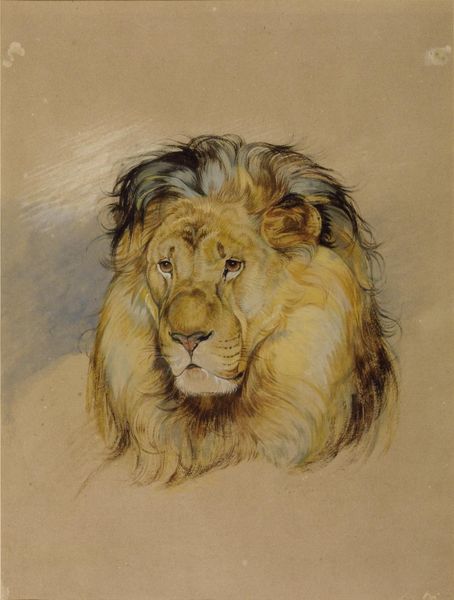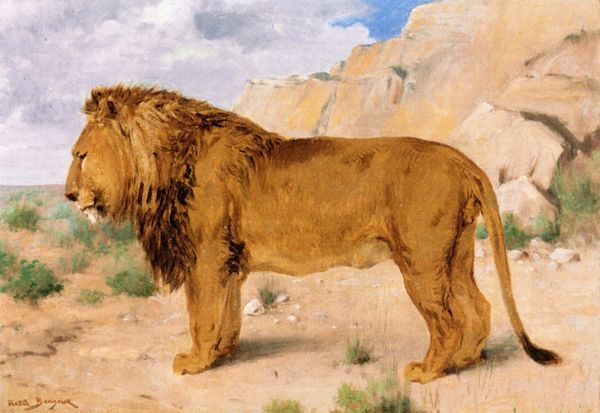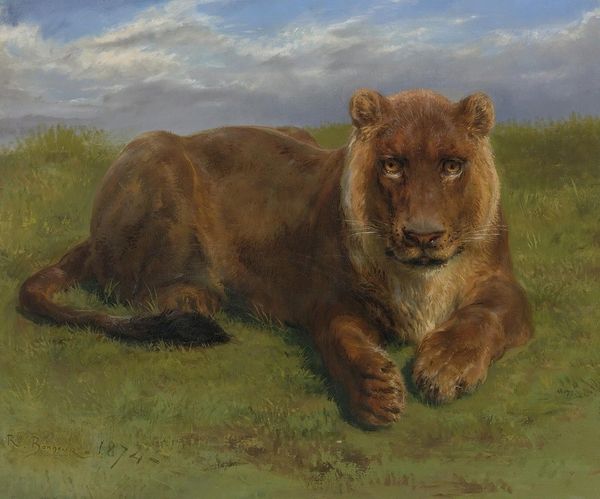
painting, oil-paint
#
animal
#
painting
#
oil-paint
#
landscape
#
charcoal drawing
#
oil painting
#
portrait reference
#
animal portrait
#
genre-painting
#
realism
Copyright: Public Domain: Artvee
Curator: Rosa Bonheur's "Lion guettant une proie," which translates to "Lion watching its prey," is a captivating oil painting, even if undated. Editor: It's powerfully intense, isn't it? The lion’s low stance and piercing gaze immediately suggest anticipation, maybe a touch of predatory anxiety lurking just beneath that mane. It brings up questions around our perception of animals and their instinct, forcing us to consider their lived realities within a colonial framework of observing 'wildness.' Curator: Bonheur, being a master of Realism, carefully renders not just the physical presence but seems intent to also catch some inner feeling of this magnificent animal. It echoes back to Ancient Egyptian images of regal creatures—animals were never "just animals," you know. This animal is full of symbolism that has survived and resurfaced for centuries. Editor: Absolutely. Consider, too, that Bonheur defied 19th-century societal norms as a woman artist specializing in animal subjects. Was her intense, almost reverential, portrayal of animals like this lion perhaps a commentary on the confinement and societal expectations she, too, was subjected to? Does her art challenge traditional patriarchal systems where women were viewed through an objectifying gaze, similar to how we often objectify the animal kingdom? Curator: That's a great perspective. There is something about how present and formidable it feels that aligns with the figure of the powerful Great Mother archetype. Think about goddesses connected to lions in various mythologies - they are symbols of maternal strength. In many cultures, the lion represents a potent protector. It makes you consider Bonheur's interest in the innate power in animals and a natural world that exists despite the pressures of civilization. Editor: Right, and within the social contexts of her time, these majestic animals were often subjects of imperialist hunts or colonial exhibitions. The animal becomes another subject of exploitation in many narratives. By portraying its alert sentience and raw power, is Bonheur confronting such practices? Perhaps advocating for their inherent rights, within her own medium? Curator: Interesting points to consider. Viewing the animals' perspective and potential resistance to its environment does broaden the image into social and personal arenas. Thank you. Editor: A good reminder that art should prompt us to look at established ideas differently. Thank you too.
Comments
No comments
Be the first to comment and join the conversation on the ultimate creative platform.
